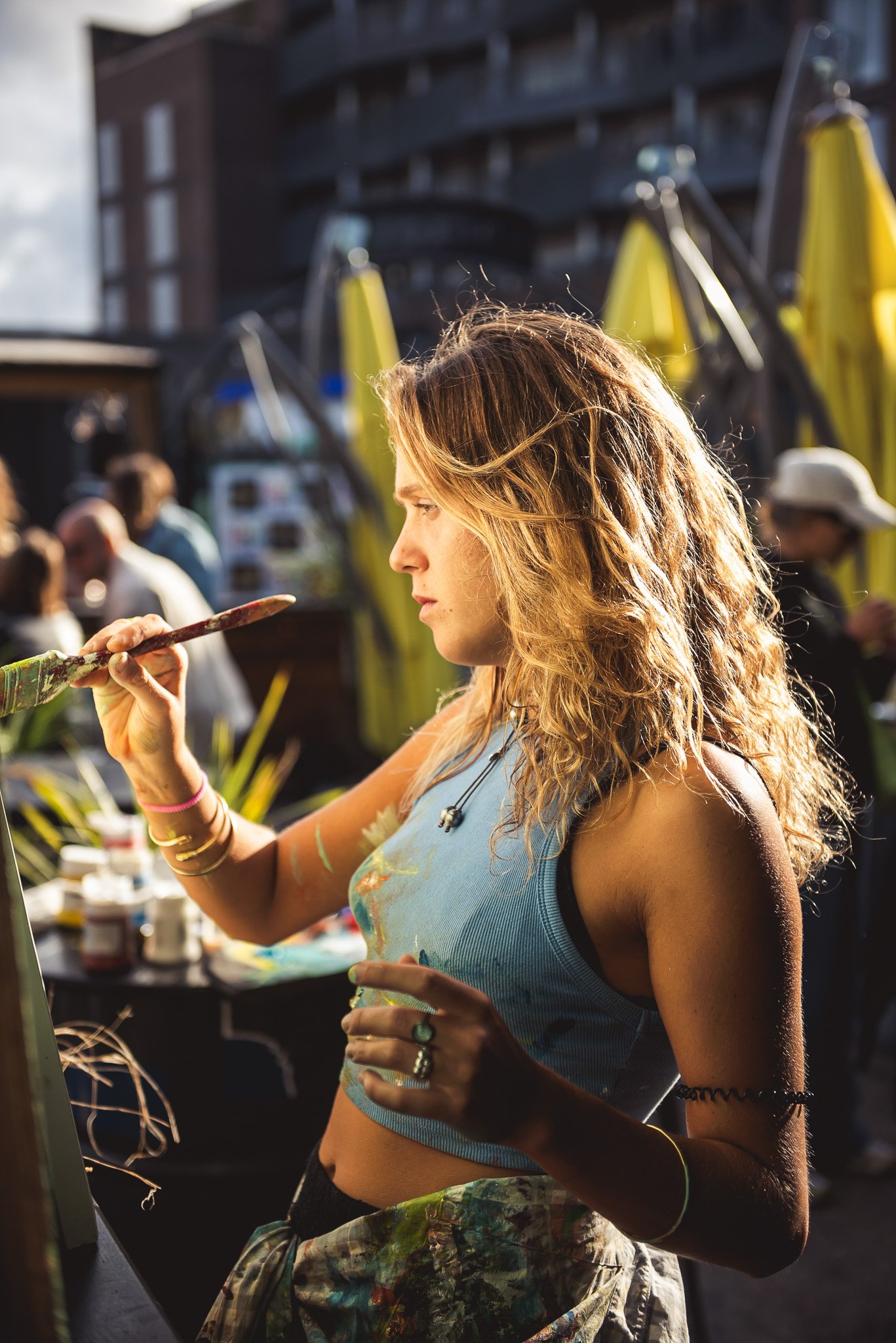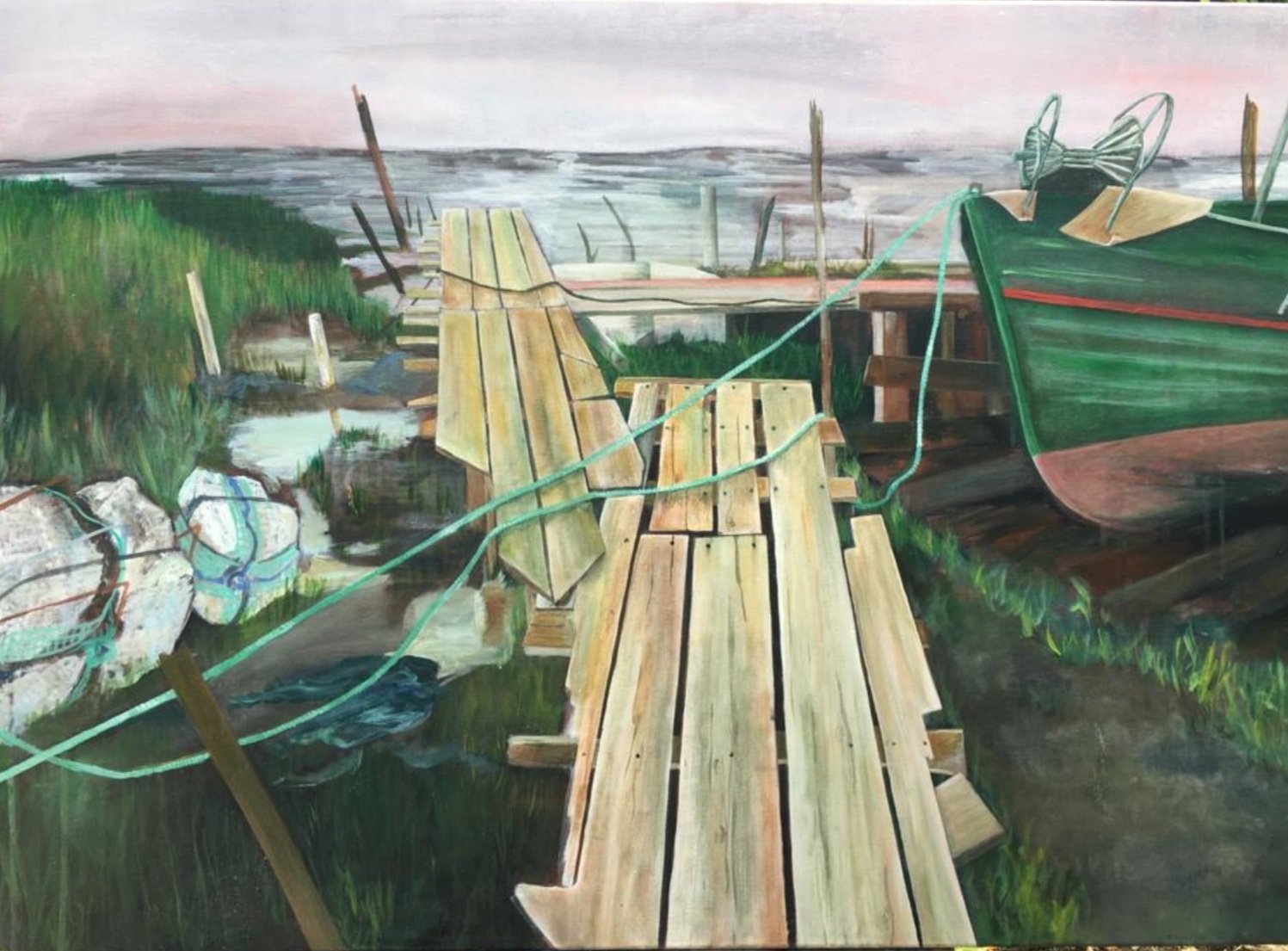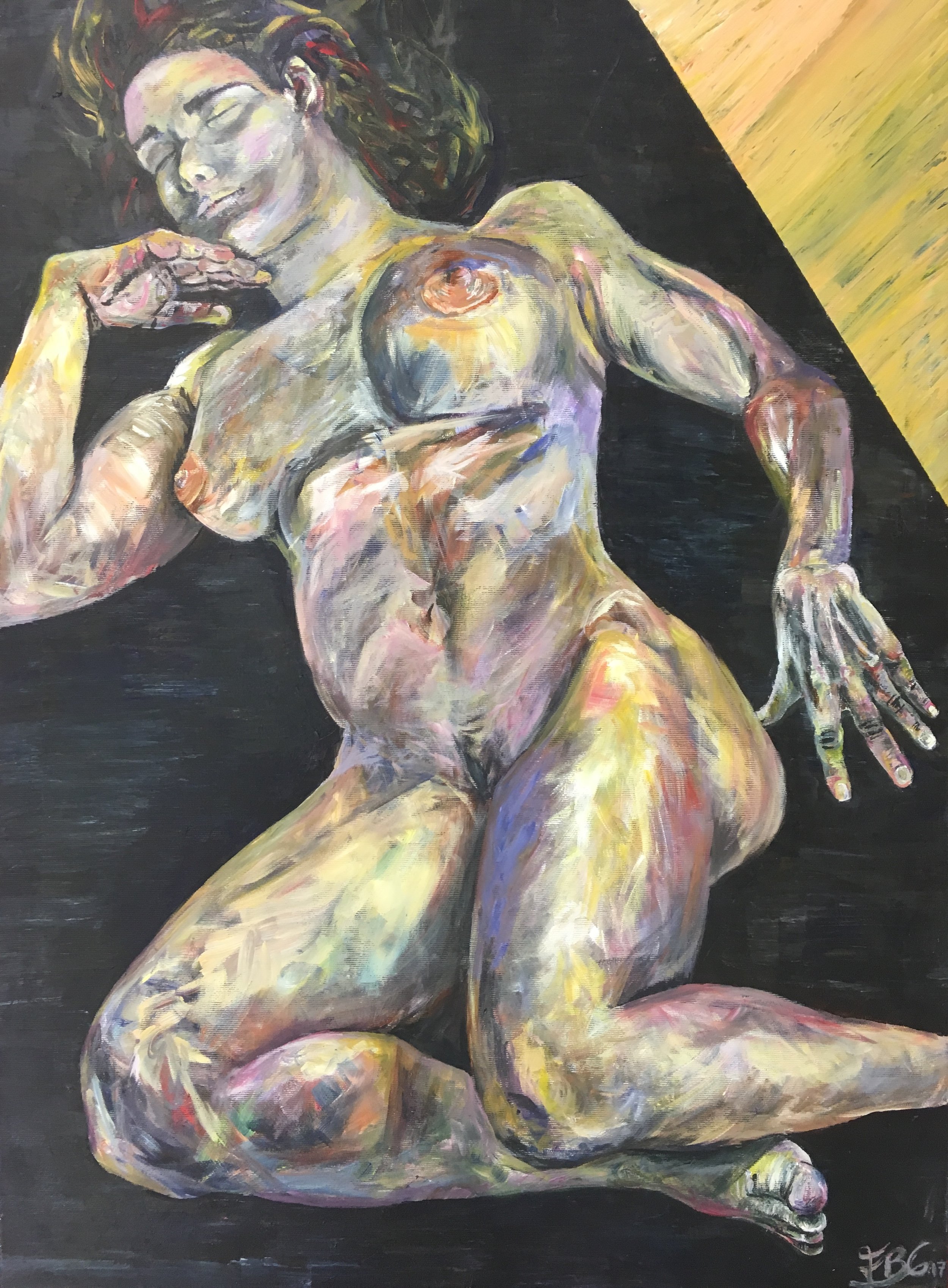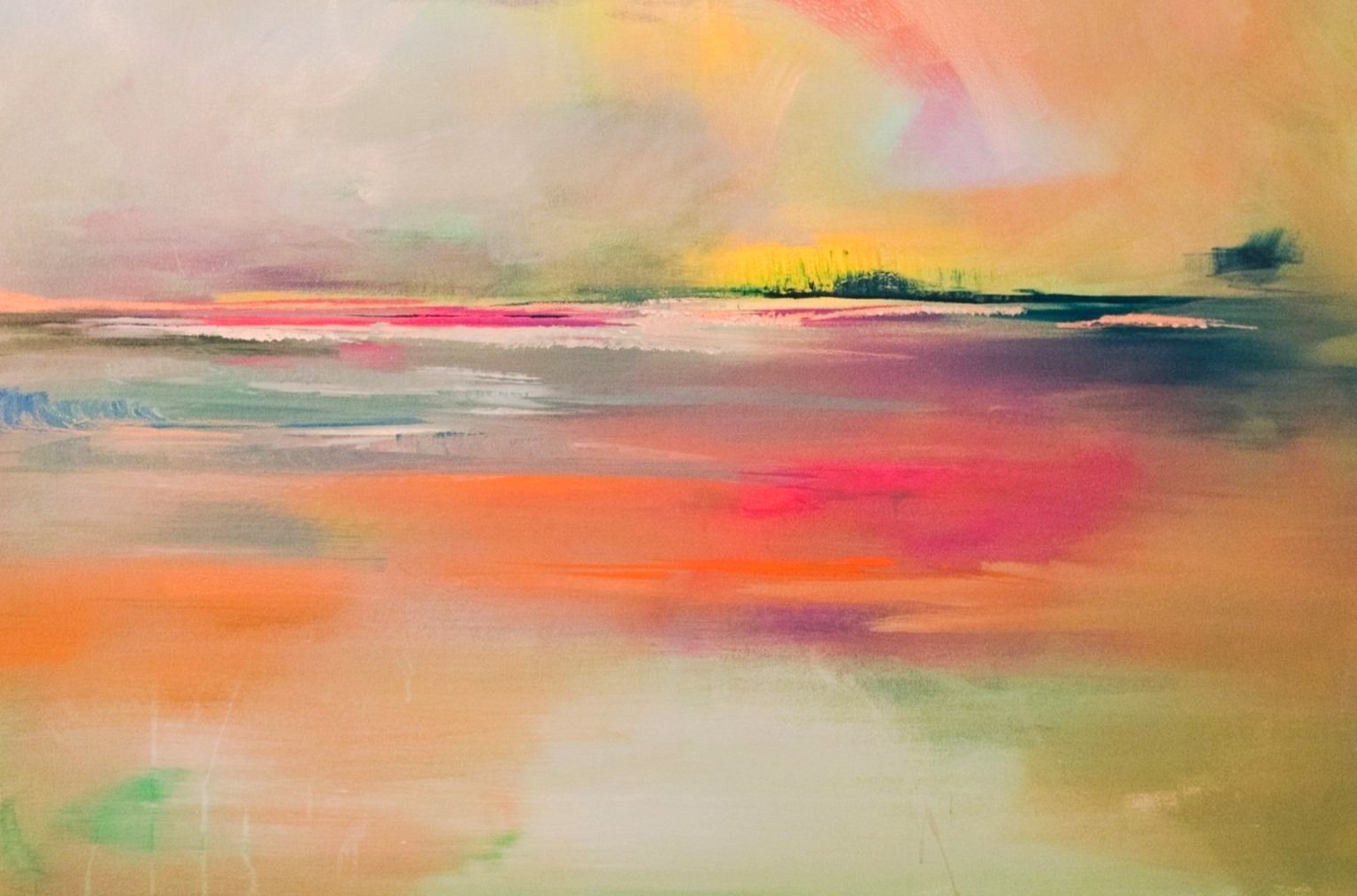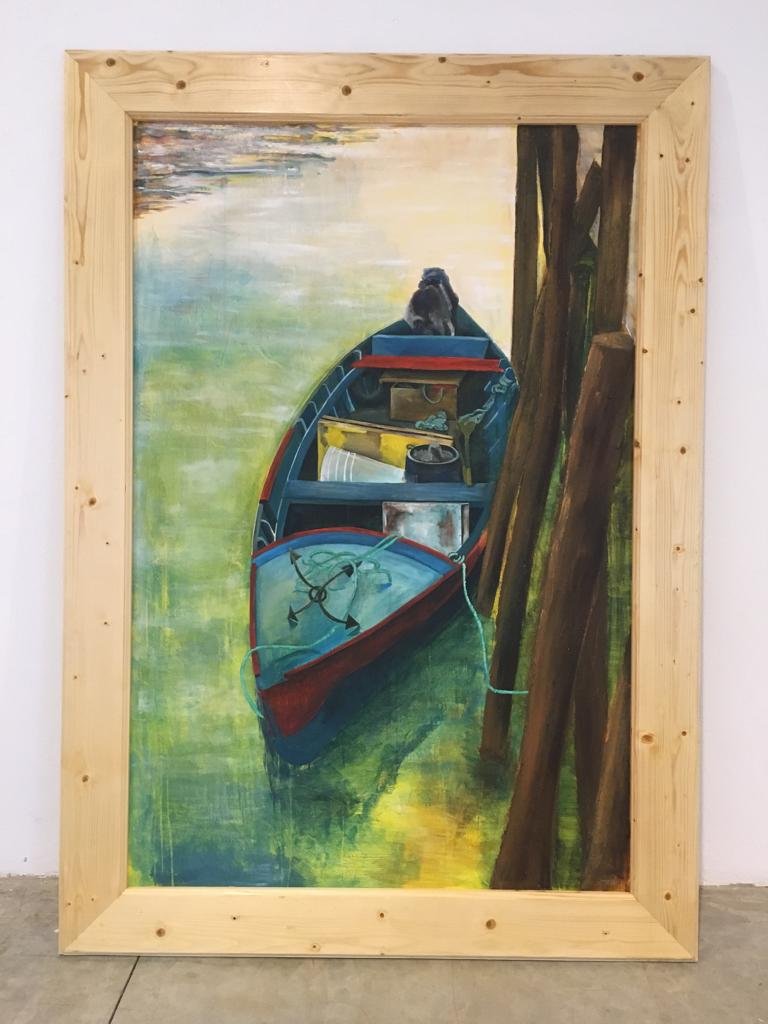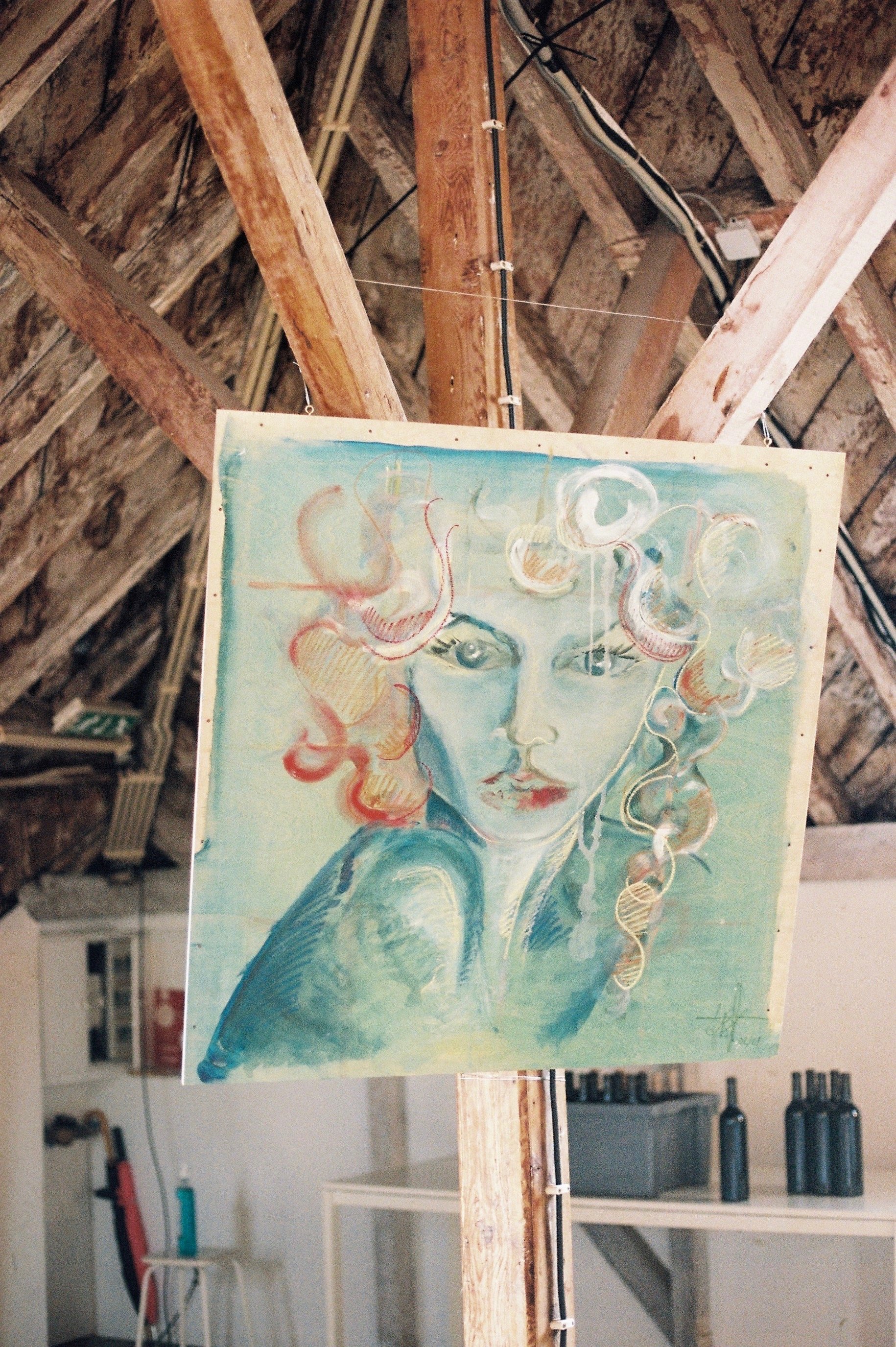Interview
Frederica Brito e Cunha
Frederica was born in Madrid and raised intermittently between Spain and Portugal. Mostly immersed in nature and the ocean, she never lost this instinctive, strong connection to mother nature and the environment, always prioritizing and respecting Her.
In April 2021, she made her first solo show, The Tipping Point, in Artroom Gallery Lisbon, and in 2022 graduated Architecture from the University of Bath. The same year, she exhibited a second solo show, Lisbon Light, at her studio in Lisbon, and enrolled in Architecture Master at Universidade Autónoma de Lisboa.
Her artistic exploration of acrylic and oil painting—where she introduced chalk, oil pastel, gold leaf, epoxy, and others- involves an immersion into color and composition. Inspired by bright lights and contrast, her latest work is an organic creation of seascapes or marés—products of past experiences and memories of a new and vast ocean connection.
What is your background and how did you start your journey in the art world?
“I was born in Madrid, Spain, and raised intermittently between there and Portugal. I was always immersed in nature and with the privilege of the ocean to call home in Portugal. I grew up surrounded by creativity and expression, having a father who paints like no one I have ever seen, and a sister who is a full-time visual artist. Constantly stimulated and interested in creating things with my hands, I developed a passion for painting, sculpting, and drawing, and I have been doing it since I can remember.”
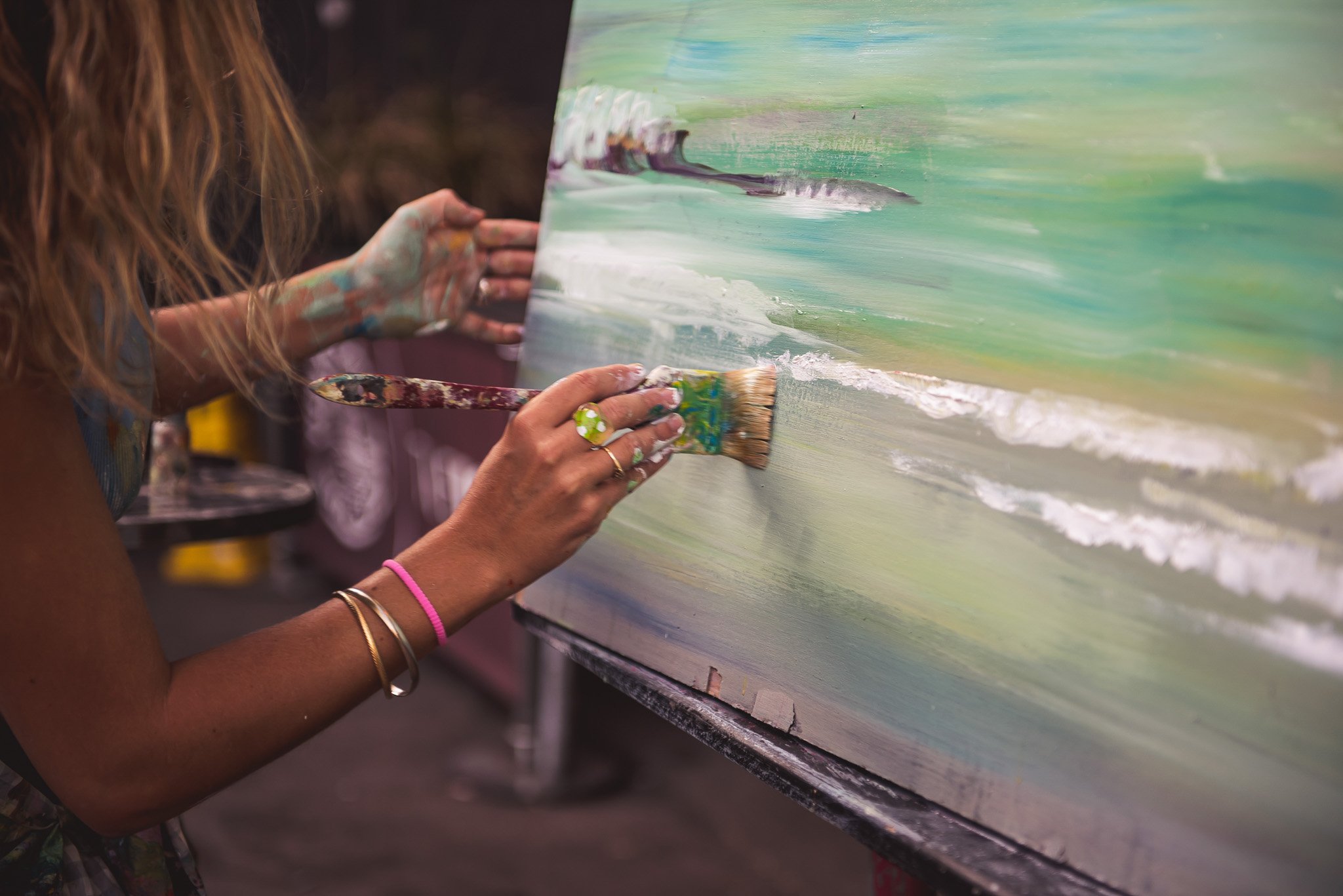
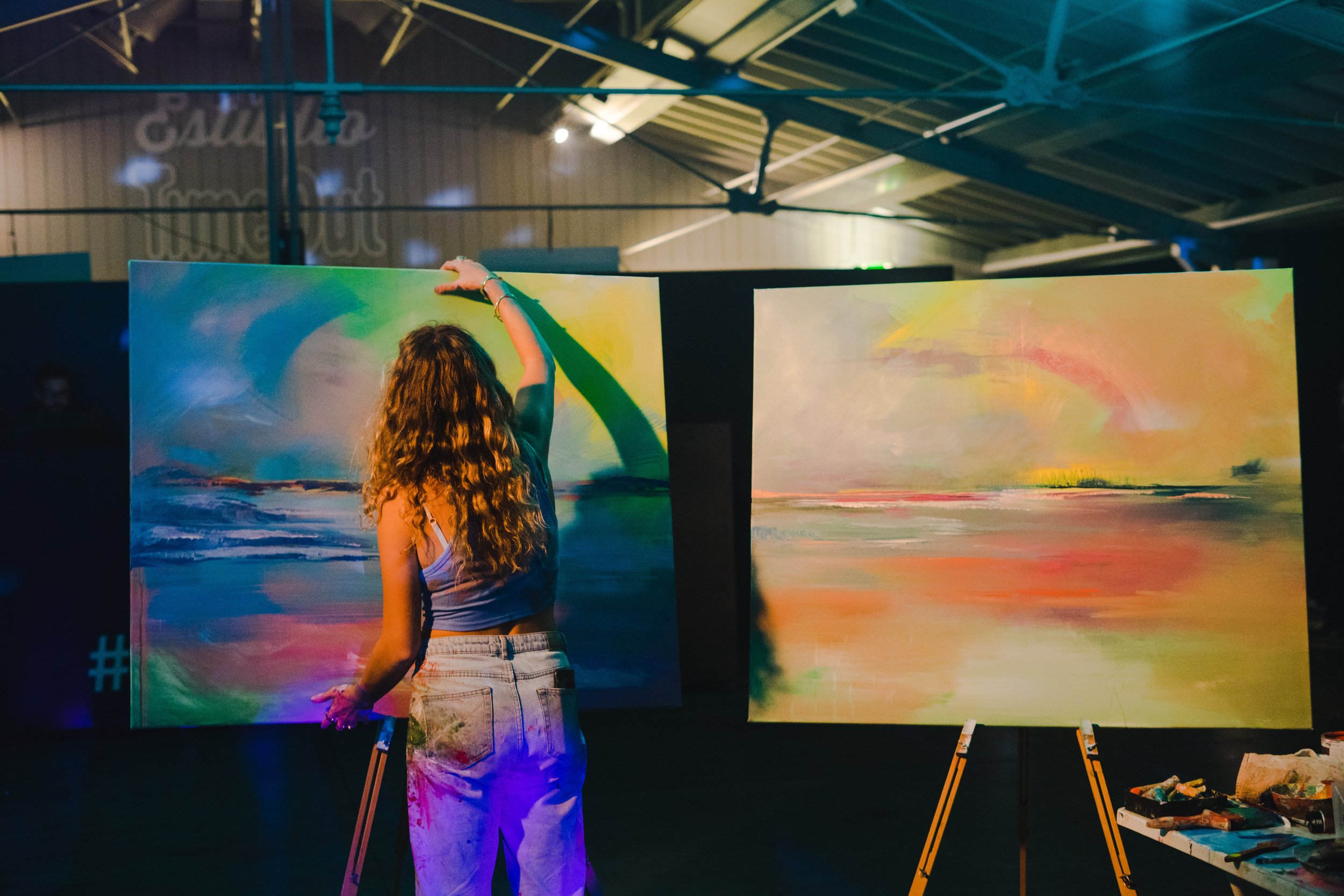
What inspires you most?
“I have the most fun exploring color and composition. I remember looking at my father transcribing the works of Dali from his mind, creating designs inspired by the long legs of the elephants and the lying nude bodies melting on the grounds of an arid celestial backdrop. For years, I developed my technique, transcribing images, paintings, and life models; the latter teaching me the most.
For years transcribing felt like enough, initially teaching me a great deal about technique, and later culminating in taking my path after just a few glances at a magazine photo or editorial. However, this year, I went on the journey of trying to create from my mind; trying to understand how a composition can be created and transformed. To answer the question, I am inspired by this constant pursuit of layering color and arriving at a final design, whatever that might be. In terms of content, I enjoy representing something real. In the past, I have been pursuing portraiture, the human body, flowers, landscapes filled with culture (boats), and abstract ocean and sky views.”
What themes do you pursue? Is there an underlying message in your work?
"I try to represent freedom. In architecture, I have to follow many rules and systems, pushing me to want to do the exact opposite at the studio. Sometimes when I’m lost in a painting, I tell myself to do exactly the opposite of what I was thinking of doing, maybe because I have the freedom to do it. What pushes me further is this feeling of no fear, fully guided by color.”
How would you describe your work?
“My work is exploratory and varied. I am still in the process of learning and understanding what it is that I want to represent. In truth, I like to believe we all are. In this search, I always thrive to captivate dialogue and inspire thought.
I feel like at the studio, the paintings become charged with energy. In a synergy with the space and all the other works, each piece captures this energy and transforms it through the unique lens of its image. This charge, along with the painting’s form, materiality, finish and composition, invite a dialogue with the viewer, and an overall company and friendship.”
Which artists influence you most?
“Magritte, Dali, le Corbusier, Karl Blossfeldt, Georgia O´Keefe, Kengo Kuma, Helen Frankenthaler, DaVinci, Frida Khalo, Mark Rothko, Escher, Francis Bacon, Anselm Kiefer… the list goes on and on.
Various artists inspire me by their use of color, compositions, technique, lifestyle, and impact. It is interesting to understand their process and the time of life they found themselves in a while creating a particular piece. We can learn as much from the artist’s inspiration as from the work itself.”
“It is in the balance between technique and freedom that my path lies, and that many artists have talked about too.
Escher says, ‘If I compare the process of execution of a print from my technical period with a print from when I was expressing a determined idea, I get the impression they stand almost contradicting each other.’”
What is your creative process like?
“This year, when producing Lisbon Light, I was keen on learning to create with no image reference. Letting go of any routines or set steps, I began understanding color composition through abstract expressionism. I was inspired by the process of Helen Frankenthaler, Jackson Pollok, and Mark Rothko, trying to understand color balance and how color itself, through different mark-making and layering, can create a composition. This happened parallel to designing my website, so colors were hand-picked from this exploration.
From this series of works, I started to create what I call marés in Portuguese, or seascapes in English. Inspired by the ocean sea views, these images represented the moment of awe we are repeatedly faced with on my side of the world, when the sky and the water express a vivid moment of joy or any other emotion. When I first saw these, I repeated the process through time, learning how to manipulate the composition and finally create something I could deeply relate to, and with so much potential.”
What is an artist’s role in society and how do you see that evolving?
“An artist can have a massive impact on society, bringing severe political, social, and economic issues to light. I believe art is a great tool to represent society and push it to develop a reflection on sensitive topics.
Ultimately, all types of art have a place in the world, be it by sparking conversation, providing company, shaking ideals and taboo subjects, exploring the world of the mind, or actively changing the perception of an issue.
Art and media have evolved, creating an abundant supply of globalized thoughts, but not all come from a place of wisdom or insight, and thus one should carefully choose what art to follow.”
Have you had any noteworthy exhibitions you'd like to share?
“My first show was in Casa da Cultura da Comporta in 2019, entitled Enredamentos Familiares. The exhibition was curated by my sister—Janis Dellarte—and me, and it was entirely focused on our nostalgic connection to the ocean, the fishermen, and the area. In individual journeys that culminated in the overall show, we explored the relationship between the tides and the inhabitants, fishing and its environmental consequences, and our respect and reliance on our seas.
Almost two years later, I was an artist resident at Artroom Gallery in Lisbon, sharing a studio with Andres Ciccone and Alexander Mignot while working as an assistant for Pedro Vaz. From this experience, my first solo show, The Tipping Point, in April 2021, focused entirely on portraits.
My latest show was Lisbon Light, in September 2022, at my studio in Lisbon.”
Website: bcfrederica.webflow.io
Instagram: @frederica.fbc

